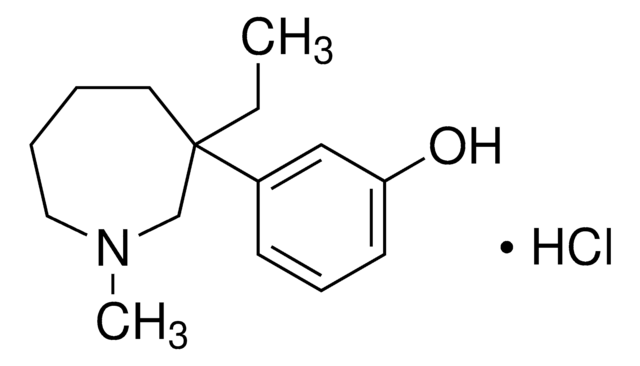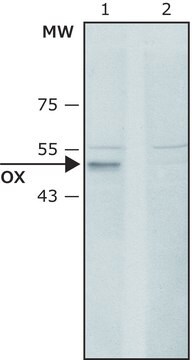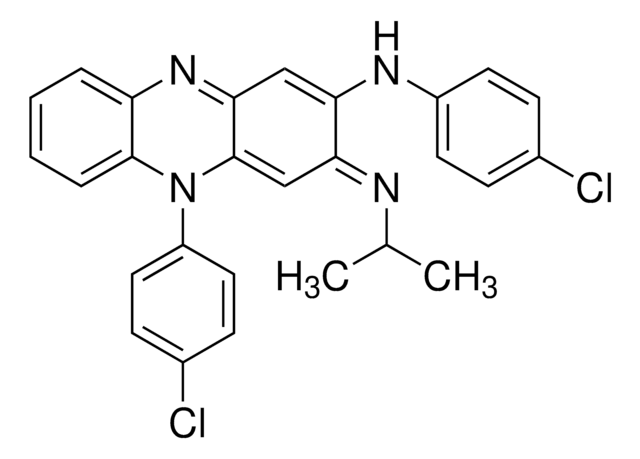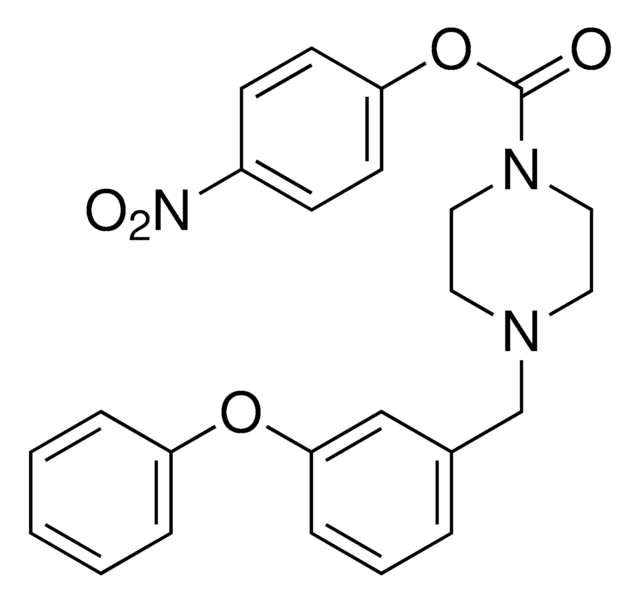M2824
Meptazinol hydrochloride
Synonym(s):
3-(3-ethylhexahydro-1-methyl-1H-azepin-3-yl)-phenol hydrochloride, IL-22811 hydrochloride, WY-22811 hydrochloride
About This Item
Recommended Products
Assay
≥98% (HPLC)
Quality Level
form
powder
color
white to off-white
solubility
H2O: >10 mg/mL
originator
Wyeth
SMILES string
Cl.CCC1(CCCCN(C)C1)c2cccc(O)c2
InChI
1S/C15H23NO.ClH/c1-3-15(9-4-5-10-16(2)12-15)13-7-6-8-14(17)11-13;/h6-8,11,17H,3-5,9-10,12H2,1-2H3;1H
InChI key
MPJUSISYVXABBH-UHFFFAOYSA-N
Looking for similar products? Visit Product Comparison Guide
Biochem/physiol Actions
Features and Benefits
Signal Word
Warning
Hazard Statements
Precautionary Statements
Hazard Classifications
Acute Tox. 4 Oral
Storage Class Code
11 - Combustible Solids
WGK
WGK 1
Flash Point(F)
Not applicable
Flash Point(C)
Not applicable
Regulatory Listings
Regulatory Listings are mainly provided for chemical products. Only limited information can be provided here for non-chemical products. No entry means none of the components are listed. It is the user’s obligation to ensure the safe and legal use of the product.
JAN Code
M2824-10MG:
M2824-50MG:
M2824-BULK:
M2824-VAR:
Certificates of Analysis (COA)
Search for Certificates of Analysis (COA) by entering the products Lot/Batch Number. Lot and Batch Numbers can be found on a product’s label following the words ‘Lot’ or ‘Batch’.
Already Own This Product?
Find documentation for the products that you have recently purchased in the Document Library.
Articles
We offers many products related to opioid receptors for your research needs.
Our team of scientists has experience in all areas of research including Life Science, Material Science, Chemical Synthesis, Chromatography, Analytical and many others.
Contact Technical Service









